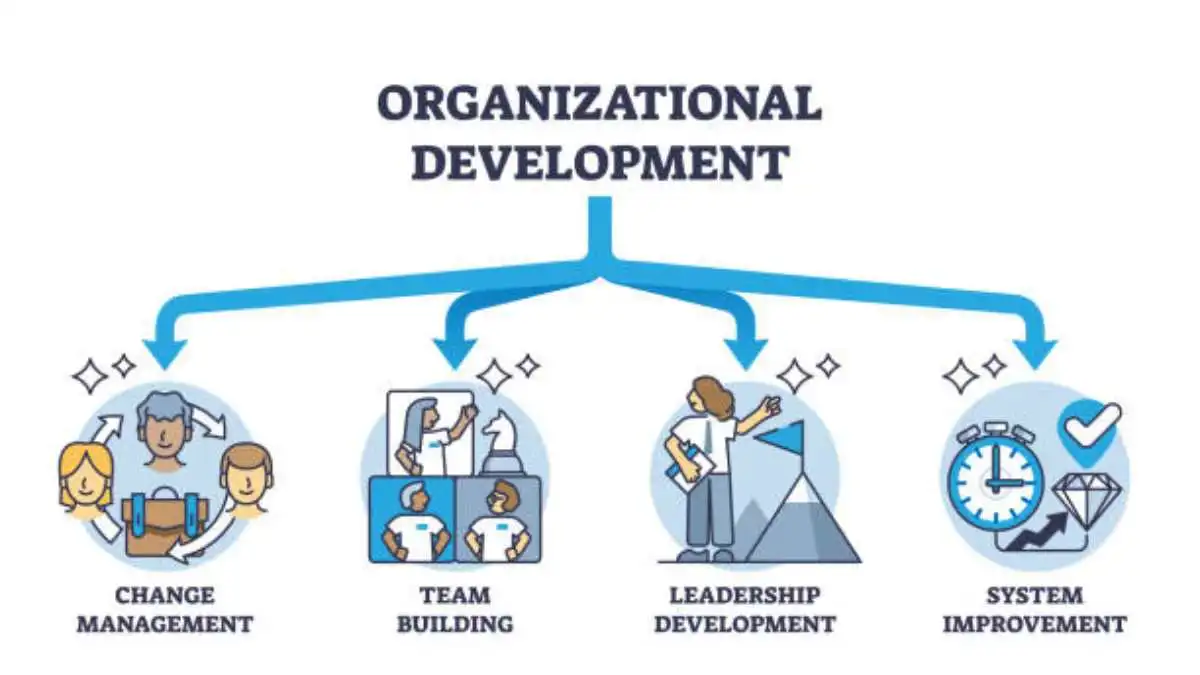BUSINESS
Strategic Leadership: Harmonizing Development Programs with Organizational Goals

The Essence of Strategic Leadership Alignment
In today’s relentless and ever-evolving business environment, aligning leadership development with organizational strategy is foundational to long-term success and sustainability. This strategic alignment goes beyond the mere acquisition of skills; it involves ensuring that leaders’ capabilities resonate with the overarching mission and goals of the company. Integrating leadership strategies with organizational objectives facilitates a workplace environment where targeted innovation and goal accuracy are the norm rather than the exception. The elegance of this alignment lies in its ability to focus the entire organization’s energy toward common, well-understood goals, thereby enhancing overall productivity and morale. When executed effectively, this approach transforms every team member into a proactive contributor to the company’s vision.
Strategic alignment is the cornerstone of binding leadership programs and corporate strategies into a coherent framework. This framework is essential for achieving both immediate and long-term organizational objectives. Forward-thinking organizations recognize the paramount importance of this integration. Many seek expert guidance from specialized consultancy firms that offer comprehensive development strategies that augment leadership skills while ensuring strategic alignment. Such firms help ensure that leadership development plans are not only about skill enhancement but are fully integrated into the company’s strategic trajectory, providing a sustainable competitive advantage and fostering an adaptive, agile corporate culture.
Understanding Leadership Development Programs
A robust leadership development program is at the heart of significant and sustainable organizational growth. These programs are meticulously crafted to tap into individual potential, fostering critical competencies such as strategic thinking, effective decision-making, and powerful communication. Participants in these programs do not emerge as mere managers; they evolve into visionary leaders who inspire and mobilize their teams toward peak performance and innovation. Typically, these programs blend in-house training sessions with workshops facilitated by accomplished external experts. Additional insights into tailored approaches to leadership development can be found through resources like https://www.navalent.com/leadership-development-consulting/. Each program is carefully designed to address the specific developmental needs of the organization, ensuring a strategic fit with the overarching corporate goals.
The true value of these development initiatives lies in their ability to mold future leaders who can dexterously navigate an increasingly complex and competitive market landscape. By instilling essential skills and promoting a mindset oriented toward adaptability, organizations cultivate a leadership pipeline ready and capable of steering the company toward future strategic success. These programs empower leaders to meet challenges head-on with resilience and enthusiastically capture new opportunities, preparing them to guide their teams confidently through the ever-present uncertainties of the business world.
Strategies for Aligning Leadership with Organizational Goals
- Identify Core Objectives: The initial step in aligning leadership development with strategic aims is the precise definition of the organization’s imminent and long-term objectives. This clarity is a blueprint for creating leadership initiatives deeply intertwined with strategic priorities, providing a clear path for leader development initiatives.
- Customize Development Plans: Leadership programs must be meticulously designed to reflect the company’s pre-defined goals while accommodating individual learning journeys. Personalized learning experiences enhance engagement and ensure that leaders can directly relate their personal growth to the company’s strategic vision, thus driving superior performance and productivity.
- Encourage Cross-Department Collaboration: Inter-departmental interactions foster a comprehensive understanding of the organization’s challenges and opportunities. This kind of collaboration is vital in breaking down operational silos and fostering shared accountability, creating a united effort toward achieving the organization’s strategic aspirations.
Real-World Examples of Success
Numerous enterprises have successfully harmonized their leadership development initiatives with strategic goals, yielding notable benefits. For instance, a leading multinational corporation reconfigured its leadership architecture to enhance corporate culture and market performance. As highlighted by Harvard Business Review, this strategic alignment was critical to the firm’s global coherence and growth acceleration, ultimately bolstering its competitive position in the market. These examples showcase how intentional strategic integration of leadership development can result in unprecedented achievements and set a benchmark for industry standards.
Challenges in Implementation
While aligning leadership development with organizational strategy is fundamental to ensuring corporate success, it is not without its challenges. Resistance to change poses a significant hurdle, especially from individuals and systems deeply entrenched in traditional methodologies. Additionally, constraints related to finite resources and diverse stakeholder expectations often impede swift progress. Addressing these challenges demands a proactive and strategic approach. Companies that anticipate potential obstacles and craft responsive strategies can foster smoother transitions, maintaining alignment and synergy between leadership development initiatives and strategic goals.
The Role of Education and Training
Education is indispensable in bridging leadership development with strategic objectives, acting as the critical linchpin linking personal skills progression with organizational needs. By incorporating forward-thinking training modules focused on current industry trends and pragmatic case studies, leaders have the knowledge, insight, and adaptability necessary to maintain competitive advantages. According to a Forbes article, effective training provides leaders with innovative tools and methodologies, thus enabling them to drive innovation and bolster organizational agility, all while effectively navigating uncertainties and capitalizing on burgeoning market opportunities.
Conclusion: The Road Ahead
The continual journey of integrating leadership development with organizational strategy is a pledge of dedication that demands adaptability, foresight, and a relentless focus on securing long-term success. As the business landscape evolves, so must organizations’ strategies to maintain alignment with these critical areas. Through substantial investments in comprehensive leadership frameworks and promoting a culture of ongoing learning and development, organizations ensure survival and foster thriving success in today’s fiercely competitive environment. This alignment is a testament to the power of innovative leadership and the relentless pursuit of operational excellence and organizational effectiveness.
-

 BIOGRAPHY7 months ago
BIOGRAPHY7 months agoBehind the Scenes with Sandra Orlow: An Exclusive Interview
-

 HOME1 year ago
HOME1 year agoDiscovering Insights: A Deep Dive into the //vital-mag.net blog
-

 HOME1 year ago
HOME1 year agoSifangds in Action: Real-Life Applications and Success Stories
-

 BIOGRAPHY1 year ago
BIOGRAPHY1 year agoThe Woman Behind the Comedian: Meet Andrew Santino Wife




























